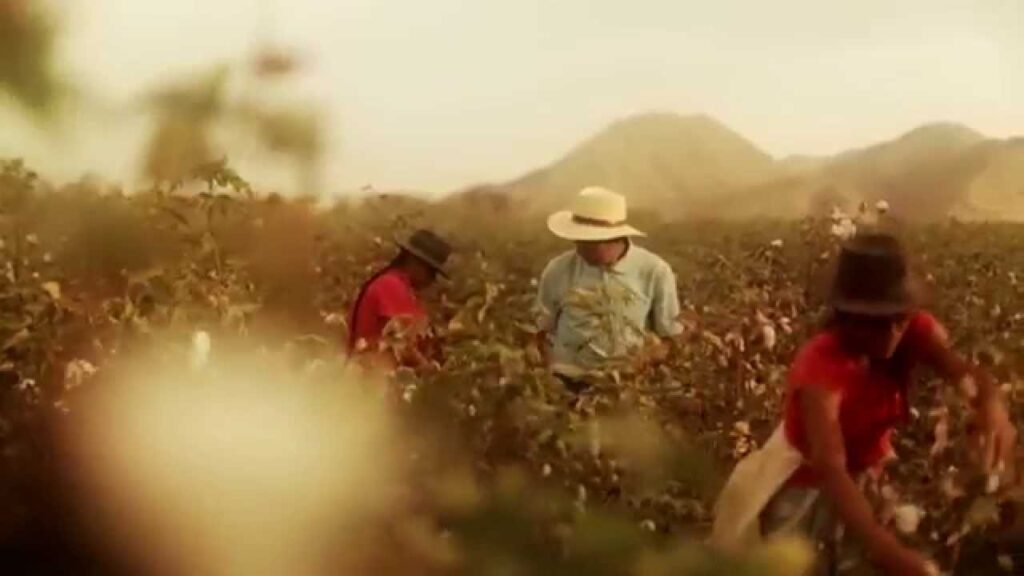Native South American Luxury Textiles of Peru & Inca Civilization
Peruvian Pima cotton, gossypium barbadense, is luxury cotton native to South America. Here is an overview and history of Peruvian Pima cotton from the Incas to today.
Gossypium barbadense, commonly known as Pima cotton, is today cultivated in many of the major cotton-growing regions of the world. This luxury cotton, highly valued on the global market, is still harvested in Northern Peru where its origins can be found.
What Makes Luxury Peruvian Pima Cotton So Special?
Cotton is cotton – or is it? Stephen Yafa, in his book Cotton: the Biography of a Revolutionary Fiber, highlights the importance of length in any given species of cotton fiber. Luxury cotton is distinct from more common cotton in that the fibers are longer, and this distinction is vital. Yafa likens this to “the difference between perfectly drinkable table wine and a celestial Chateau Lafite-Rothschild”.
Gossypium barbadense, or Pima cotton, is often categorized as an ELS cotton, or Extra Long Staple. Pima cotton fibers can be more than double the length of standard cotton, a fact that gives Pima cotton some distinct and desirable qualities.
The “Peruvian Connection”, specialist sellers of Peruvian clothes and fabrics, emphasize this special quality of Pima cotton on their website: “Because of its exceptional 1-3/8″ staple length (ordinary cotton fibers measure 1/2″ to 3/4″), Peruvian Pima cotton is silky soft, durable, and highly resistant to pilling”.
It is this combination of softness, strength, and durability which gives Pima cotton its status as a “luxury cotton”.
A History of Peruvian Pima Cotton
Gossypium barbadense was given the name “Pima” cotton after the Pima Indians who first harvested cotton in the United States. An experimental farm for the cultivation of this species of cotton was developed in the early 1900s by the United States Department of Agriculture (USDA) in Sacaton, Arizona.
While the common name of the plant originated in North America, its historical origins are distinctly South American. Cotton fragments have been found in Peru dating as far back as 3100 B.C. Archeologists discovered cotton samples of this era in the Huaca Prieta excavation, a site located in today’s cotton-growing region of Peru.
Inca cotton was also harvested from the genus gossypium barbadense. The Incas used cotton both for practical reasons as well as artistic purposes. Their cotton weaving techniques and the quality of their textiles impressed the Spanish Conquistadors, while many of these same techniques were lost during the Spanish conquest of South America.
Peruvian Pima Cotton Today – Gossypium Barbadense in Modern Peru
Peruvian Pima cotton is cultivated today in the Northern coastal valleys of Piura and Chira, as it has been for thousands of years. The climate and soil conditions here are perfect, with ideal seasonal rainfall and temperatures.
While modernization of the Peruvian Pima cotton growing process has obviously occurred, many plantations still harvest the cotton by hand. This further enhances the general quality of Peruvian cotton. Hand-picking leads to fewer imperfections in the yarn giving an even softer finish. It is also a more environmentally friendly process.
Machine harvesting can scratch the cotton and taint the color resulting in an inferior product. According to Swicofil.com, “About 30% of world cotton is harvested by machines. Australia, Israel and USA are the only countries where all cotton are picked by machines”.
Peruvian Pima cotton deservedly claims the title of “luxury cotton”. Not only does gossypium barbadense provide a higher-quality fiber, but the harvesting methods found in Peru also result in a finer finish worthy of the rich history of Peruvian cotton.
Sources:
- Yafa, Stephen – Cotton: the Biography of a Revolutionary Fiber, Penguin, 2005, ISBN 0143037226

